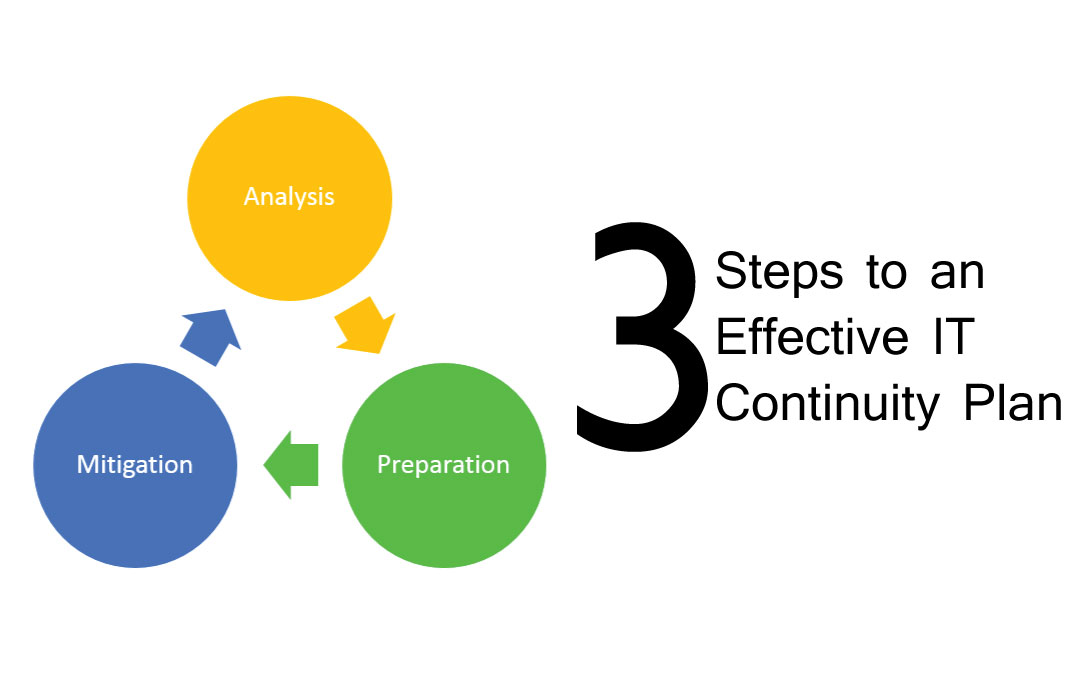3 Steps to An Effective IT Continuity Plan

A comprehensive continuity plan allows organizations to minimize financial loss and disruption of operations in the face of disaster. With proper preparation, companies can remain in business or ramp back up rapidly when the unexpected happens – whether it’s a fire, flood, or malicious Internet attack. The three steps to effective continuity planning are: analysis, preparation, and mitigation.
Analysis. The first step of your IT continuity plan is to analyze what you already have. This involves a comprehensive examination of current network structure, applications, databases, and equipment being used. Complete data about the company should be gathered and documented, including contact and customer details, equipment, systems, and applications information. Conducting a business impact and risk analysis can determine the security of crucial assets by considering the possible catastrophes – both natural and manmade – and gauging their potential impact if they should occur.
Preparation. It’s important to plan for multiple communication options, and to ensure that everyone has the necessary phone numbers, web addresses, and emergency contacts to stay in touch. A plan for data backup and restoration is crucial. Make routine backups, store at least one copy offsite, and test them regularly. Since some data is likely critical to the continuation of your business, the impact of data loss from hardware failure, human error, hacking, or viruses could be significant. Identify vital applications and ensure that duplicates of this software are available to reinstall on replacement equipment.
Mitigation. If the worst happens, the final step is to limit the damage. The use of cloud-based applications can allow an organization to plan for disruptions. Employees can access company data through their personal home computers, allowing them to be more productive by utilizing the environment they are already familiar with during outages. In disaster situations, phone communications might be down, and mobile phones can be a lifesaver. Smartphones in the workplace improve business continuity, making it easier to communicate via voice, text, or data. Mobile phones make it easy for employees to interact with coworkers, clients, and vendors from various remote locations during an emergency.
A comprehensive IT continuity plan allows for an organized recovery, ensures that the company’s assets remain secure, and provides a mechanism for the continuation of business operations. Plan for the worst, and enjoy the peace of mind that comes from knowing that, even if the unthinkable happens, your critical data will be safe.
